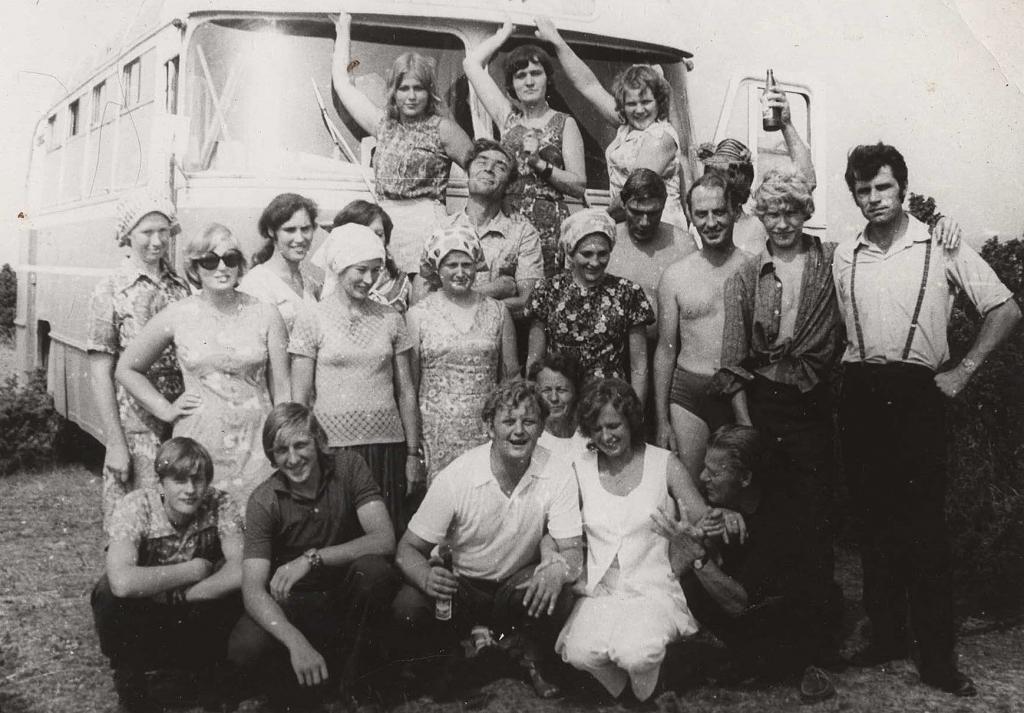Estonia has joined the ranks of the world’s wealthiest countries, but the journey has not been easy; this is the brief overview of the last hundred years in the country’s economy.*
The beginning
At the beginning of the 20th century, Estonia was one of the most developed regions of the Russian Empire. Compared with the imperial average, Estonia boasted twice as many workers per 1,000 residents and three times greater output.
Estonia was home to many large companies that catered for the Russian market, such as Dvigatel, Krenholm Manufacturing Company and cellulose factories, but the true industrial greats of the era that were meant to restore the Russian fleet, such as the Russian-Baltic shipyard Bekker & Co and Noblessner, were still under construction or had not yet really embarked on large-scale shipbuilding.
Small-scale industrialisation and weaker ties to Russia were beneficial to Estonia, once the country achieved its independence in 1918. Leaving the partly evacuated metals-industry giants aside, the country was left with relatively few entirely superfluous production companies. Most of the remaining large textiles, cellulose and timber enterprises continued operating even during the years of independence, seeking alternative markets to Russia with variable success. Small and cottage industries, which dominated the economy, were in any case mainly focused on the domestic market.
However, finding our feet was made easier mainly by the fact that we did not need to change the basic workings of the economy and that Estonia was an agricultural country. Farmers had suffered significantly due to wartime requisitioning, but life had taught them to continue to work no matter what.
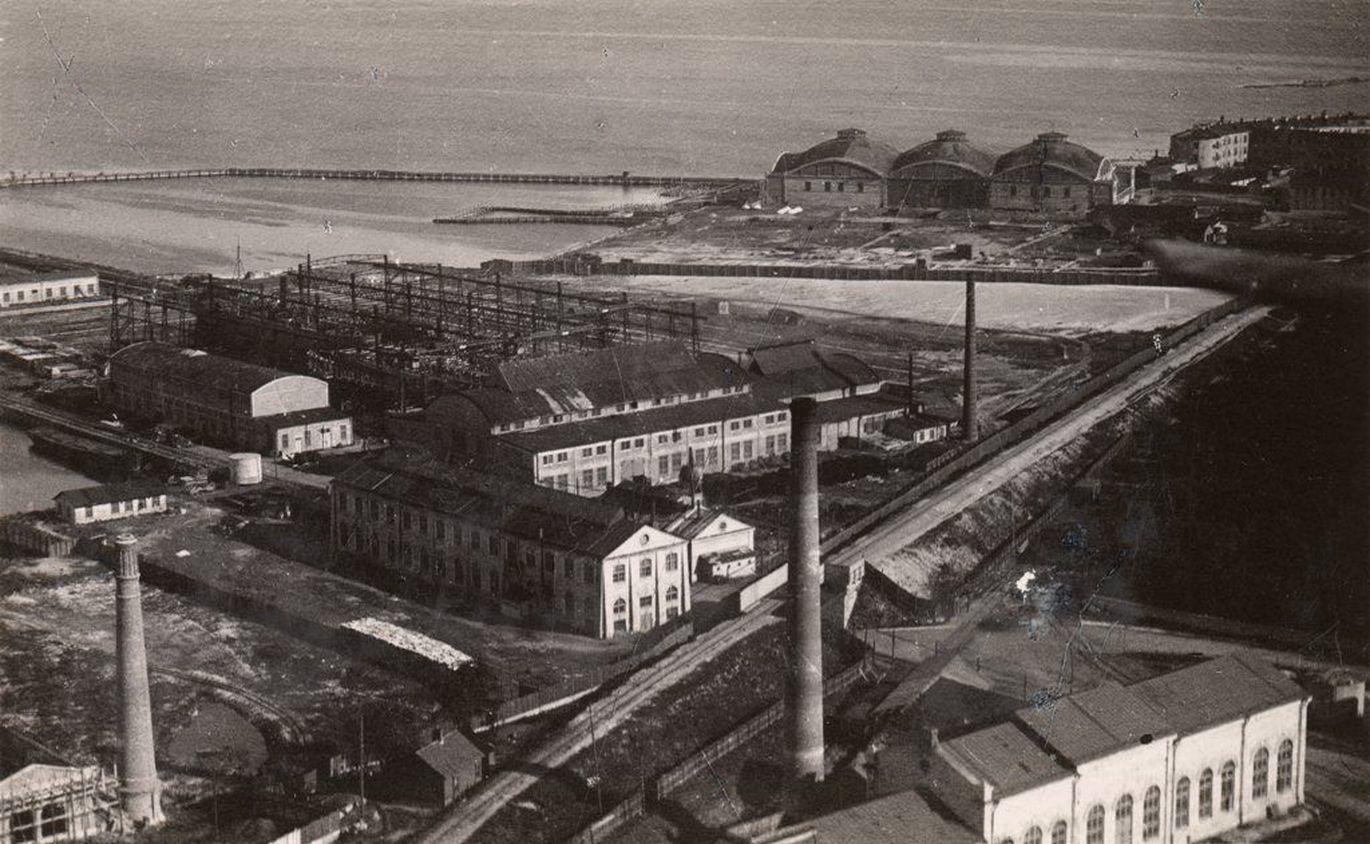
Agriculture leading the way
Agriculture accounted for 59% of Estonia’s industry, establishing it as the leading economic sector of the interwar period. After the war, the manufacturing production grew from 15.7% to 17.4%. A small decline was noted in trade and the domestic service industry. The prominence of work connected to social activities (government, culture etc.) increased from 5.6% to 6.5% due to Estonia becoming an independent state.
Land reform had the largest impact of the changes implemented. Before the reform, 1,149 large households owned more than 2.4 million hectares (58%) of land and 51,600 privatised farms a little less than 1.8 million hectares, while about half a million of the 864,000 people who lived in rural areas and made their living from farming were landless.
The reform initiated the dispossession of more than 2.3 million hectares (5.7 million acres) of manor estates and Russian state lands. As a result, Estonia had more than 133,000 farmsteads of various sizes. For instance, there were more than 20,000 farms of one to five hectares (2.5 to 12.4 acres), and fewer than 500 farms larger than 100 hectares (247 acres).
Agriculture and animal farming were both important in Estonia but, depending on the year, livestock farming was 10–20% more profitable than crop cultivation.
Animal farming was dominated by cattle farming, which generated more than half the profit made from this area, followed by pig farming with about 25%. Sheep and other domestic animals yielded around 15% in total. Despite there being 218,000 horses in Estonia in 1939, horse-rearing accounted for only about 2% of the output of animal farming.
Agriculture was dominated by grain farming, which yielded on average 60% of agricultural profits. This was followed by potatoes and flax with 10–12% each. Horticulture contributed less, only 4–6%, but the area saw rapid growth.
72% of agricultural produce was consumed locally, the remainder exported. Nevertheless, this accounted for more than half of the exports in 1938. By contrast, much less of locally consumed agricultural produce was imported. The late 1930s saw the establishment of institutions such as the Estonian Meat Export, the Estonian Butter Export and the Estonian Egg Export to consolidate exports of agricultural produce.
To acquire the funds needed for agricultural development, the taxation of agricultural exports and imports was improved, allowing the Cattle Farming Development Fund to be established along with the Pig Farming Development Fund in 1935.

The UK and Germany main trading partners in the 1930s
Before World War II, large and medium-sized industries in Estonia employed around 60,000 workers, the majority in the textiles industry, followed by metals and engineering, construction, food, drink and condiments, timber and cellulose, clothing and fancy goods. Thousands of people were employed in the rapidly developing chemicals and minerals industry as well as quarries and mines. Only 1,200 people worked in power stations and gas and water supply.
In addition to large and medium-sized industries, Estonia had 20,000 small cottage industries employing an average of one or two people. Even though artisans were active in the same fields of activity as large industries, this sector was overwhelmingly dominated by the clothing industry, with 12,500 workers.
The industrial sector gradually became more focused on the home market and by the 1938-1939 financial year, more than three-quarters of its production went to the domestic market. The use of domestic raw materials increased. In 1936, it formed 45% of the materials used, and two years later, the proportion had reached 53%. In a troubled and protectionist world, self-sufficiency had become vital.
Approximately half the industrial sector was owned by foreign companies. This was common in the textiles, paper, cellulose and cement industries. The private shale-oil industry was established solely with the help of foreign capital. The liabilities of companies operating in Estonia to foreign banks were of a similar order of magnitude.
The government also became more involved in industry and business. The majority of shale-oil, forestry and peat industries were state or semi-state-owned enterprises. The state also assumed significant responsibility for organising the export of agricultural produce and foodstuffs after the Great Depression (a severe worldwide economic depression that took place mostly during the 1930s, originating in the United States – editor).
Estonia’s main trading partners were the UK and Germany, which accounted for more than 60% of Estonian exports. More than 5% of exported goods went to Finland, over 4% each to the US, Sweden and Russia, and 3% to France. Around 1% of goods were exported to other target countries.
While Estonian exports mainly concentrated on two markets, the countries of origin of imported goods were somewhat more varied. The majority of goods were imported from Germany (31%), followed by the UK (19%), Sweden (8.2%) the US (6.6%), Russia (4.9%) and Finland (4.3%). A considerable amount of goods was also imported from British colonies.
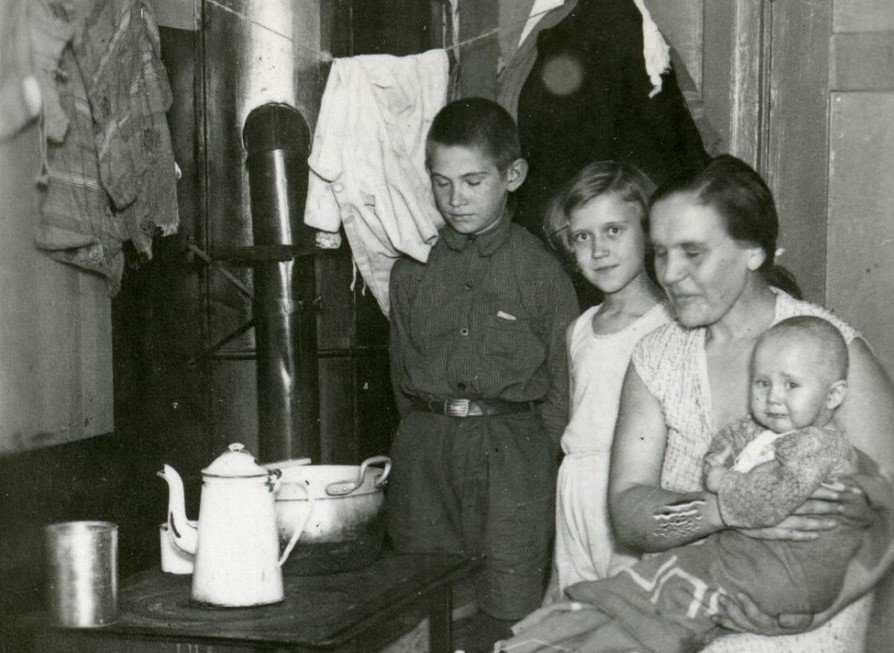
Land transport dominated by the railway
Land transport was dominated by the state-owned railway. In 1939, the railway network consisted of 1,232 kilometres (766 miles) of standard-gauge and 909 kilometres (565 miles) of narrow-gauge track and sidings. In 1939, the railway employed 5,044 officials and 3,363 workers. In the 1938 financial year, the national railway yielded considerable profit, contributing 14.5% of Estonia’s state budget.
Estonia had 23,000 kilometres (14,292 miles) of roads, 3,500 kilometres (2,175 miles) of which were open for traffic year-round. In 1938, there were fewer than 6,000 cars in Estonia, 2,300 lorries, and fewer than 300 buses serving 119 routes in summer and 103 in winter. In the same year, 11.6 million journeys were made by rail in the 523 carriages in service. 5,633 journeys were made with freight vans, each of which had a load capacity greater than that of an average lorry, resulting in the transport of 2.4 million metric tonnes of goods.
Maritime transport was another important area. In 1938, the Tallinn harbour was visited by 1,764 long-distance ships and 1,991 coasters carrying a total of 836,000 metric tonnes of goods and 105,000 passengers. Together with Pärnu, Tartu and other smaller harbours, some one million metric tonnes of goods were transported by sea, which is comparable with the volumes transported by rail when considering the distances involved.
The Estonian shipping register comprised 221 vessels, of which 125 were steamers. The largest of these was the 4,688-GRT SS Eestirand.
The development of air traffic was interrupted by the outbreak of World War II. In 1939, the Tallinn Airport handled 993 take-offs, 65% of which were bound for Helsinki. The annual number of air passengers was 13,300.
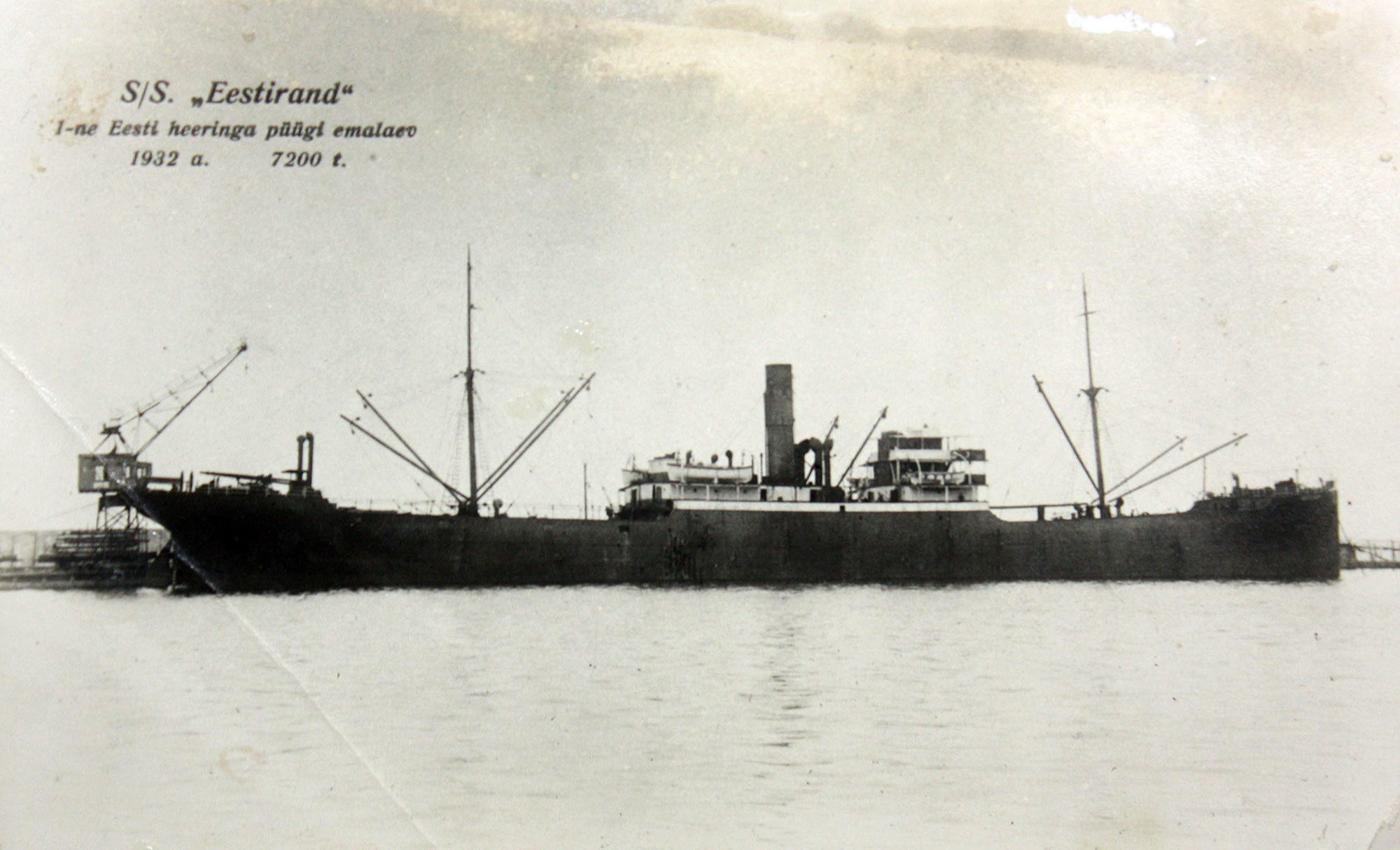
A stable currency after 1927
Most of the revenue to the Estonian government budget came from direct and (mostly) indirect taxation. Indirect taxes included customs and excise duties. In addition, the state received income from its spirits monopoly. The direct taxes included income and business tax and levies. About one-third of the government’s budget came from state-owned assets and enterprises – around half of this came from the national railway and a fifth from telephone and telegraph services. The rest came from state forests, lands, harbours and waters and other assets.
Most of the budget was spent on economic activity, about half of which went into traffic management and transport. The rest was allocated for developing agriculture, organising taxation and public finances and strengthening internal and external security. Much was also spent on public education and cultural events, social security and welfare, on the administration of justice and on public health.
The Estonian currency underwent several changes over 20 years. At the beginning of the Estonian War of Independence, all previously used currencies were used interchangeably: the German Reichsmarks, the Ostmarks and the Ostrubles; and the tsarist, the Duma and the Kerensky roubles. The exchange rates for these had been established by the German authorities during the occupation.
Since it took time to organise the printing of money, the government released marks borrowed from Finland. Thus, the Estonian mark was pegged to both German and Finnish marks at the time of its introduction, but also to the values of Russian currencies, having no defined value of its own.
The state continued to print money to fund the Estonian War of Independence, and consequently, the mark’s exchange rate fell quickly against the British pound sterling. By the end of 1921, it had fallen from the initial 60 marks to the pound to 1,523, and by the end of 1923 to 1,758.
Since the exchange rate was not sustainable, Estonia had to spend the reserves of gold it received under the Tartu Peace Treaty. As early as 1924, it became clear that the state had to borrow money to stabilise the currency. The monetary reform was implemented in 1927, after which the Estonian kroon (which replaced the mark in 1928) remained stable.
Compared with other countries, the purchasing power of the Estonian people was about average among more developed countries. The US had four times more purchasing power than Estonia; Canada and Australia more than three times; and Sweden, Denmark, the UK and the Netherlands two to two-and-a-half times; Estonia ranked close to Italy. In terms of workers’ average annual income, Estonians were well ahead of Poland, Russia and south-eastern Europe.
Those employed by large industries were doing rather well. In 1939, an average male worker earned 95 kroons per month, while the average woman earned 60 kroons per month. Remuneration was lower than average in the so-called women’s industries – textiles and foodstuffs.
These hourly rates are very small and tell us little. For comparison, the prices of some foodstuffs in 1940 were: butter 1.85–2.2 kroons/kg, milk 11–20 cents/l, pork 0.95–1.05 kroons/kg, cod fillet 0.5 kroons/kg.
Living conditions changed considerably compared with the tsarist era (when Estonia was under the Russian Empire – editor). Food prices dropped by some 20%; a similar decrease could also be seen in the prices of mail and transport services. Heating and lighting became about 30% cheaper. By contrast, housing and clothing became more expensive, and the price of entertainment more than doubled. Despite the severe economic crisis in the early 1930s, people were about 20% wealthier in general in 1938 than during the best times in the pre-war period.
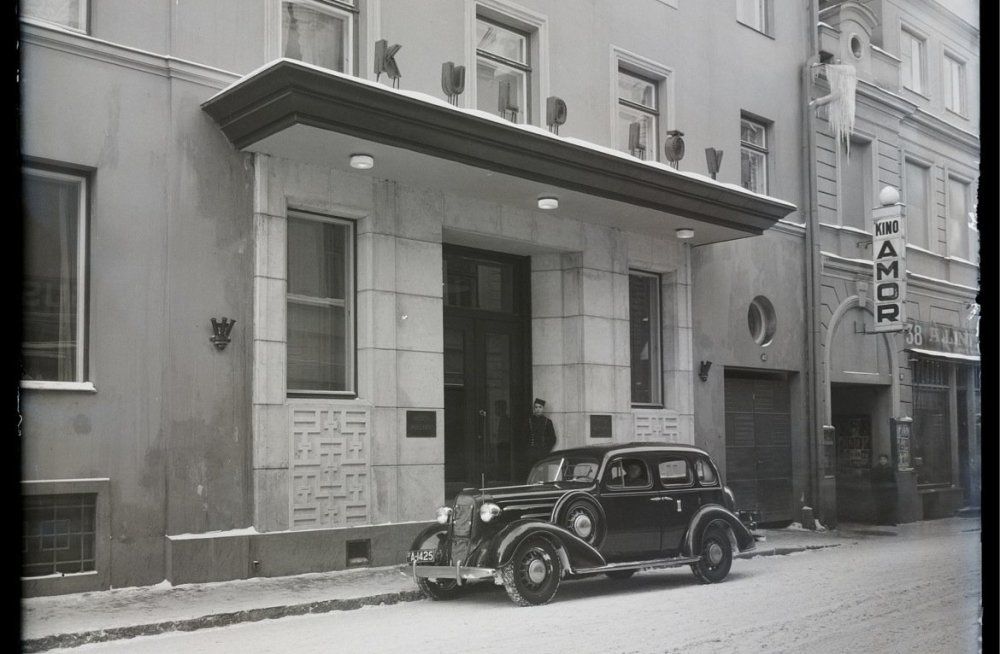
The Soviet occupation
The period from 1940 to the autumn of 1944 not only brought repression, nationalisation of property, orientation of the Estonian economy towards the east, changes in the socioeconomic paradigm and replacement of entrepreneurial freedom with the dictatorship of the command economy, but also the eradication of the system of coordination and measurement needed for effective operation and its replacement with meaningless indicators that made all statistics unreliable.
Even though the country that emerged from the war in 1944 had changed completely, it was still working. Deciding what to do was relatively easy, be it the clearing of the ruins or restoring bridges and power stations. Later this became more difficult. This was not due to leadership management or a lack of incentive, but a basic problem of leadership that essentially and consistently limited the possibilities of central government and brought about the collapse of the entire centrally managed economic system, leaving it without a leg to stand on.
It is elementary that a very large and complicated system cannot provide adequate feedback on everything. This is also why every detail of such a system cannot be centrally planned and managed. Hence, while the Soviet Union (that occupied Estonia in 1940 and then again in 1944 – editor) produced many things, the daily necessities and end products of reasonable quality became scarce. In addition to a problem of technical leadership, normal life was made impossible by the absence of real pricing.
Still, the country did not remain entirely in the dark. By looking across the border, one could see what had to be produced and which technologies and organisational methods should be used. However, what was seen could only be copied in part, because central planning and the shortcomings of the system of measurement remained an issue.
Work became increasingly unfruitful, which made it impossible to pay workers reasonable wages and led to a drop in their motivation. At the same time, people realised that there was something fundamentally wrong with the whole system.
In addition to the command economy, the prohibitively expensive arms race (mainly between the Soviet Union and the United States – editor) played a part in the economic collapse. It is entirely logical that if the smaller and economically weaker side tried to maintain or achieve a balance with the West in terms of armament, it had to spend a lot more from its smaller budget.
The question was not only about the proportion or volume of finances, but also about the quality of resources. For instance, if high-quality steel was given to the arms industry, it was obvious that tractors and agricultural equipment, which were made of so-called agricultural steel and had to be designed with a significant safety factor, were heavy and broke down all the time.
Objective reporting of what went on in the economic field at this time was complicated. At first, setting and meeting individual and easily measurable goals after the war and later was sometimes quite successful, even when the system as a whole was stuck in neutral.
With a few exceptions, ruins disappeared from cities in about five years – an unparalleled achievement. However, if we look at production figures, the Estonian economy – but not living standards – had recovered in the main industrial sectors by 1950 in spite of major war damage. But there is no reliable data about people’s living standards. Still, one can be certain that their luck did not change during that period. Far from it. There were not enough goods or money, and one had to stand in a queue to buy daily necessities. On top of it all, people had to spend their small incomes on mandatory state loan bonds.

Estonia’s energy industry supplying the north-western Soviet Union
By 1950, manufacturing had become the leading industry. The energy industry had developed particularly fast – admittedly, not to meet local needs, but mainly to supply Leningrad (now St Petersburg – editor) and later the Russia’s north-western region with electricity.
Shale oil output in 1950 was double that of 1939 at 3.5 million metric tonnes. By the time communism was due to take hold of the world and Estonia (in his 1961 speech, the Soviet leader Nikita Khrushchev promised that “communism will be built by 1980” – editor), the volume of shale oil mining had grown to 31.3 million metric tonnes.
Electricity production was also doing well; the output for 1950 was approximately three times more than in 1938, but power cuts of several hours remained a regular occurrence for several years. Electricity production peaked in the 1980s, by which time production was 122 times greater than in 1938. However, these are only a few examples of great accomplishments.
With the construction of power stations around the Baltic and in Estonia, the latter became one of the largest electricity producers in the north-western Soviet Union and was ranked sixth in the world in per capita terms after Finland. This was a great achievement if we ignore the environmental issues. The Soviet-occupied Estonia produced 173 million cubic metres (6.1 million cubic feet) of coal-derived gas, which was 66 times the amount produced before the war.
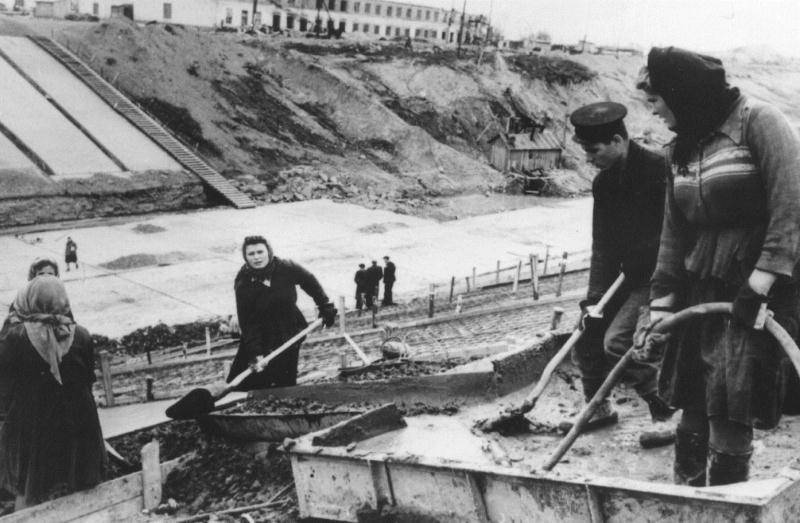
Estonian farmers suffer
Even though identifying who suffers most does not belong to the realm of economics, it must be admitted that, after the war, this title belonged to Estonian farmers. Rural life during the first decade after the war was characterised by deportations, forced collectivisation and the obligation to look after the land with ever fewer farmhands and without much pay.
It is difficult to measure, what was more difficult for the people in rural areas: the moral or physical strain. However, if we look at the process of collectivisation, farmers were not afraid of work, but of collective farms. Before 1949 (from 1949 onwards, the Soviet Union used the deportations and other tactics to suppress people in the rural areas – editor), the state had managed to lure or scare only 5.8% of farms into joining collective farms, but this number grew to 93% (119,000 farms) over the next two years.
Rural life was very difficult at first. There were fewer people and horses than in the pre-war period, and a lack of tractors with no new ones in sight. It is only therefore logical that, despite the rapid increase in the number of tractors and combine harvesters in the mid-1950s, the area under cultivation reached the level of 1940 only in the late 1970s.
Despite everything, agriculture became completely mechanised in 40 years. While in 1939 there were 200,000 horses, 1,807 tractors, 685 lorries and one combine harvester, by the end of the 1980s Estonia had more than 20,000 tractors of different capacities, more than 12,000 lorries and 3,500 large combine harvesters. All agricultural activity except potato planting – half of which was done using handed-down traditional methods – were either largely or completely mechanised.
This period also gave Estonian farmers something of lasting value: the drainage network area more than doubled.
The post-war situation in cattle farming was even worse. Pork production reached the 1940 level only after 1957, while production of beef and of poultry reached the pre-war level in 1959 and 1960, respectively. In time, production became more intensive and in 1989, Estonia produced three times more pork, 3.5 times more venison and 14 times more poultry than in 1940. However, lamb production did not reach the 1940 level at all. Sheep were not fond of the barns used on collective farms and lamb production decreased by more than half, compared with 1940.
Milk production again reached the same level by the end of the 1960s and grew a little over 50% over the next 30 years. Average production per cow more than doubled.
Production volumes were not the only things that changed in cattle farming. Automatic milking was almost unheard of before the 1950s due to the lack of electricity, but by the end of the 1960s manual milking had ceased on state farms and, with some delay, in collective farms as well.

Growing forests
One industry in Estonia that clearly benefited from the Soviet era was forestry.
In 1940, Estonia had 929,000 hectares (2.3 million acres) of forested land. 853,000 hectares (2.1 million acres) of this was under forest stands, the total volume of which was a little over 85 million cubic metres (three billion cubic feet). By the 1960s, the total area of forested land had grown to 1,420,000 hectares (3.5 million acres) and at the end of the Soviet occupation, Estonia had 1,916,000 hectares (4.7 million acres) of forested land and 1,814,000 hectares (4.5 million acres) of forest stands, with a total volume of 260 million cubic metres (9.2 billion cubic feet).
Not much was felled during the Soviet period: the prescribed yield was considerably lower than annual growth. The contribution this supply made to the Estonian economy in the 1990s is worth remembering.
Despite the inability of the Soviet Union’s automotive industry to keep up with that of developed countries, the greatest change in Estonia occurred in the development of motor transport. The use of public vehicle transport increased massively and travelling became more comfortable. By the late 1980s, there were almost 8,000 kilometres (4,971 miles) of paved roads.
At the same time, the use of air transport did not increase as much as one might have expected. After all, people do not sit on planes without a reason, and air travel is only useful if you have somewhere to fly (the Tallinn Airport was served by the Soviet state-owned airline, Aeroflot, flying to number of cities across the Soviet Union only – editor).
The relocation of the economy from rural areas to cities, as well as war damage, created great demand for building materials and construction workers. As a result, the housing stock of cities and towns increased about sevenfold during the 45 years of the Soviet occupation, while the average general area for one city resident increased from 16 square metres (172 square feet) in 1940 to almost 20 square metres (215 square feet).
As the rural population decreased and agricultural companies and farmers became wealthier, the average area per person in rural areas became considerably larger than in cities – 26 square metres (280 square feet).

Manufacturing the biggest earner
By the end of the Soviet occupation, the structure of the economy and labour status had completely changed. Agriculture, which had employed nearly two-thirds of the population in 1940, was left with 15% of workers while 45% were employed in sectors that are now internationally regarded as industrial: processing, construction, energy etc.
Half of the national income came from manufacturing, a quarter from agriculture, 6% from transport and communications and 14% in total from trade, catering, housing etc. Education, health care and public administration were considered spenders rather than generators of national income. This misunderstanding tends to be the case even in contemporary Estonia.
The Soviet-occupied Estonia exported more of its goods than independent Estonia. However, the content and geography of this did not correspond to what we regard as exports today.
As much as 93% of exported goods went to other parts of the Soviet Union, as prescribed by the “division of labour between the union republics”. The remaining 7% was divided as follows: 2% was exported to Western countries (half of it to Finland and the rest to West Germany, Sweden, the US, Spain, Italy and Portugal); 2.5% to the Soviet satellite states in Europe; and the rest to exotic distant destinations such as Cuba, Angola, Mongolia, Vietnam and Nicaragua.
When it came to imports, Estonia found itself in a privileged position – nearly one-fifth of its imported goods came from outside the Soviet Union. This meant high-quality factory equipment and better agricultural technology, but also highly valued clothing and (a minimal amount of) household appliances and drinks.

After the restoration of independence
After the collapse of the Soviet economy and the Soviet Union itself, Estonia once again found itself in a relatively good position. It was ahead of everyone else in the Soviet Union – not because it produced more than the other republics or because of state-of-the-art technology, but because Estonia was a place that Western countries often called the Soviet West.
By the late 1980s, Estonia had more foreign and joint enterprises (the reforms of Mikhail Gorbachev, the last Soviet leader, allowed private ownership from 1988 – editor) than the other republics. The country had had more contact with foreigners, had a clearer understanding of the problems accumulated as a nation, and many of Estonians had always fostered a negative emotional connection with the whole “Russian business”.
Estonia was therefore more decisive and motivated when it began to remove obstacles to development. It is no wonder that Estonia led the way in developing and implementing necessary economic reforms, getting an early head start over the others.
The Supreme Soviet of the Estonia (the legislative assembly, made up entirely of Communist Party members) adopted the first of the laws required to liberalise prices as early as December 1989. The end of price regulation made changing the taxation system both possible and necessary and laid the groundwork for free enterprise and the emergence of competition.
Most of the required steps were to some extent already taken before the collapse of the Soviet Union. The taxation system was entirely replaced, privately owned public and private limited companies began to emerge, and state enterprises were gradually privatised. It did not matter how elegant these new laws were. What mattered was that Estonians gained experience on which to build.
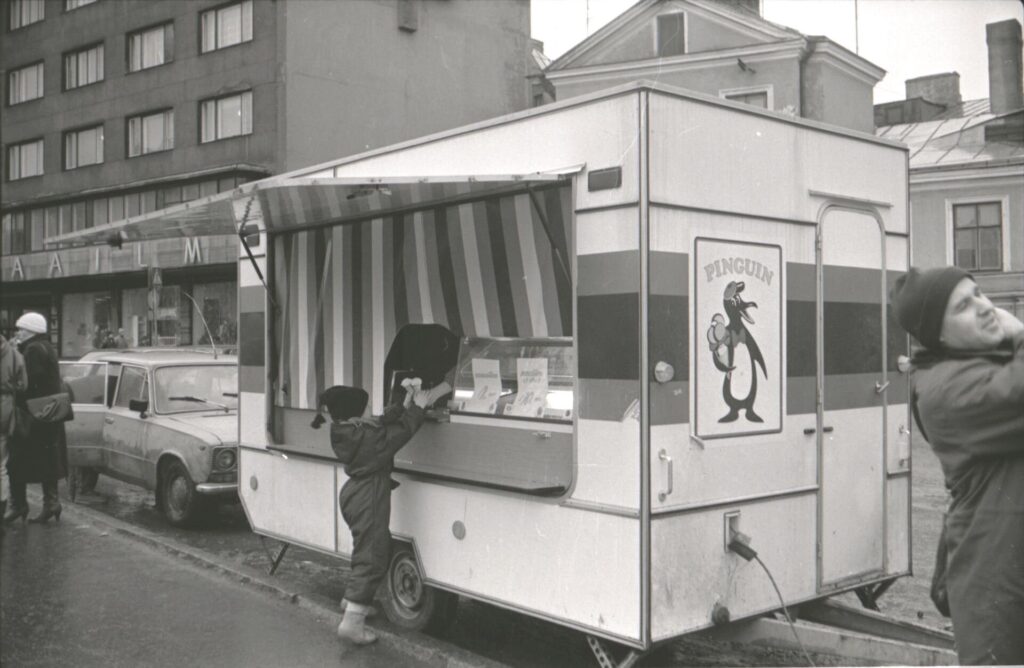
New economic model easy to choose
After the collapse of the Soviet system in 1991, choosing a new economic model was easy – because there was no choice. The only option was to undergo so-called shock therapy and opt for the simplest model available at the time, which was also somewhat painful. It is no use to argue over whether other models might have been better.
Attempts to demonstrate that Estonia could have done better would remain speculative in any case. No simulation could provide a reliable vision of what could have happened here if Estonia had chosen an alternative model. At the same time, several things could have been achieved in a more reasonable manner and several mistakes could have been avoided, but only in principle. In reality, things went the way they did.
One guarantee of Estonia’s success was certainly the implementation of monetary reform before the parliamentary election in 1992. This helped eliminate hyperinflation, which was obstructing effective management, while the convertibility of the Estonian currency, the kroon, provided fertile ground for the development of foreign trade.
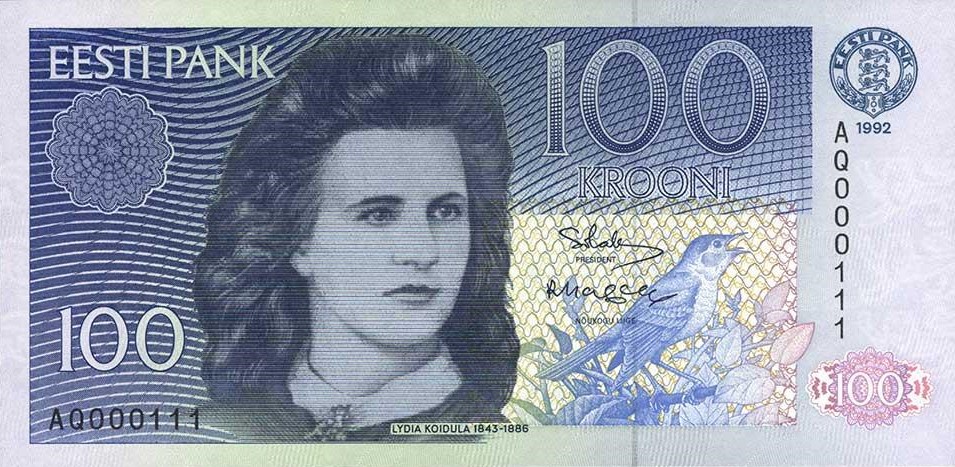
The biggest task facing the new government formed after the adoption of the constitution was the radical reform of ownership: auctioning off state-owned enterprises, restitution and the privatisation of housing stock and other assets in exchange for privatisation vouchers. Of these three components, restitution and its principles – such as leaving debts, money and securities out of the picture and determining the individualised form of assets – shook the tree the most.
However, the greatest problem, which remains a painful open wound for many people today, was that of forced tenancies (in the post-Soviet Estonia, many people who had got their homes in Soviet times found themselves in a position where they no longer owned their homes, as the property would be claimed by relatives of its erstwhile owners, so people found themselves tenants in their own homes, or, in worse cases, thrown out to the street).
While the return to its rightful owner of once worthless land that had been transformed into valuable residential land over 50 years may be considered an unforeseen detail, even though the difference in values may have been astronomical, the problem of forced tenants was predictable. Nevertheless, this did not become a nationwide problem. The majority of people lived in new apartment buildings or private homes.
Privatisation also seems rather successful in hindsight, even though there are some who are convinced that the government could have held onto a considerably larger proportion of its industry. This is doubtful because, even though Estonia is able to produce, Estonians are not very good at selling.
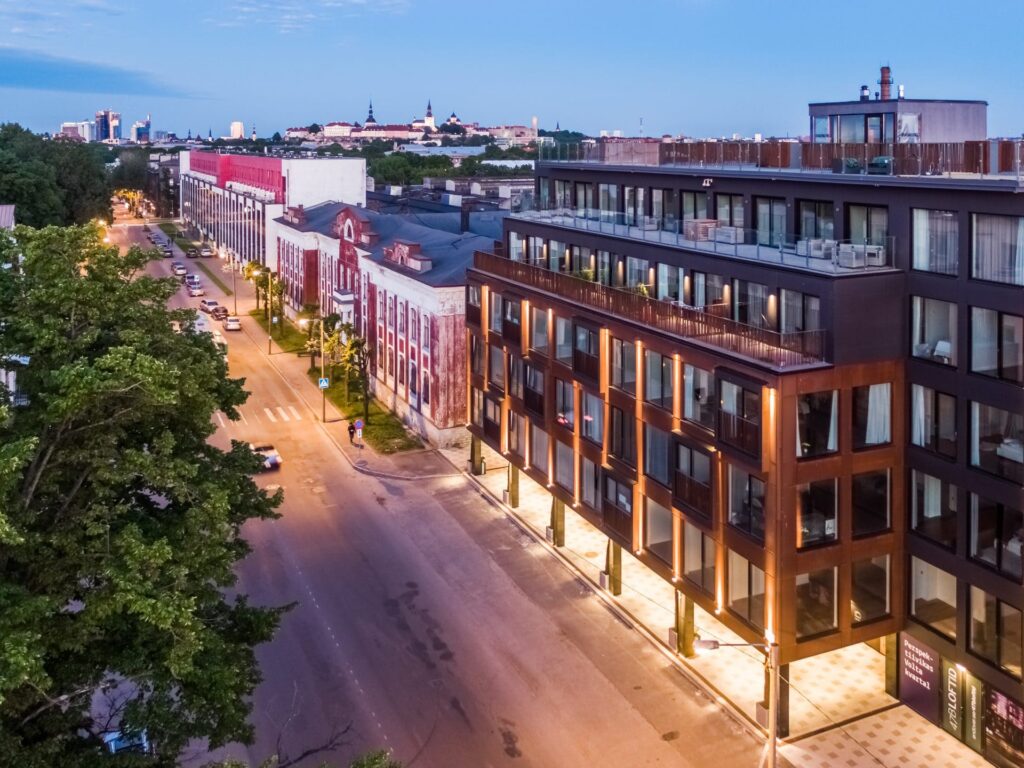
The economy grew and Estonia became increasingly more integrated into the Northern and Western European economic space, joining the European Union in 2004 and the eurozone in 2011.
In hindsight, the nominal figures for economic growth seem unbelievable: in 1992, the GDP was less than €1 billion, against more than €22 billion in 2017. In real terms, growth in that period was naturally not that big, and remained somewhere near 500-600%.
Nevertheless, it is difficult to say how much life has improved, because needs have grown hand in hand with wages and prices. In any case, our life has been considerably more dynamic and wealthy after the restoration of independence than in the interwar period (1918-1940).
The fact that Estonia does not have the same growth figures over the last 30 years as during the post-war period is irrelevant. Today, the country produces 78,000 metric tonnes of meat against 190,000 metric tonnes in 1989; 783,000 metric tonnes of milk compared with 1,277,000 metric tonnes; 200 million eggs against 600 million; and less grain. However, there is more meat in the shops, the quality is better and the choice considerably wider.
The same can be said about residential construction. It is unlikely that Estonia will match the intensive level of flat-building seen during the mass construction of concrete-panel apartment buildings as before, nor as many large power stations and high-voltage power lines, or as much land improvement. Instead, we think about how to reduce electricity consumption even more, or how to increase the yield of milk from one cow to more than 8,000 kg.
Current production and consumption can no longer be compared with the 1989 levels. Development has been very fast. Today, we mainly produce and consume things that were unheard of 30 years ago or were of completely different quality and vice versa.
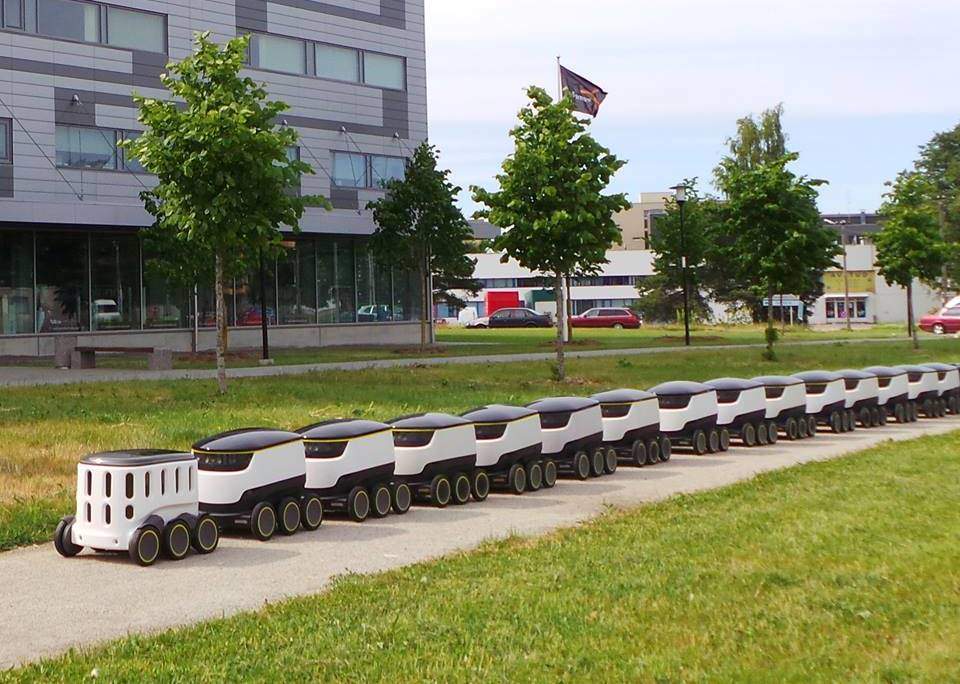
Today’s Estonia is a developed country
Estonia is no longer an agricultural country. Only 3% of the workforce is employed in agriculture, but their productivity is 20% higher than the country’s average.
Yet Estonia is not an industrial country either, because only 28% of workers are employed in the processing industry, energy production, transport, communications etc. Most Estonians (69%) work in the tertiary sector, a figure that is certain to increase as a result of the digital revolution and the automatisation of all routine and physically demanding jobs in the next 25 years.
The Estonian economy is extremely open: many companies export their entire production and a very large proportion of consumer goods is imported. People tend to check the place of production only in the case of some foodstuffs. Estonia has close export and import ties with its neighbours, but on a smaller scale it trades with at least half the countries in the world. A notable quantity of goods comes from China alone.
Today’s Estonia is a developed country as the result of a quarter-century of work. Of countries that used to be wealthy in the 20th century, we have left Argentina, who was one of the richest countries in the first half of the 20th century, considerably far behind while countries that used to be poorer per capita such as Singapore, South Korea, Ireland, Taiwan and Hong Kong have gained considerable headway compared with Estonia.
It is difficult to say where Estonia belonged in the interim (during the Soviet occupation), because the measurement system was different. It was not rich but was still one of the wealthiest countries among those with a similar history. However, Estonia’s past position in economic prosperity rankings is not that important anyway. Most of us never wanted to live in such a country, be it rich or poor.
This is a lightly edited and shortened version of the article originally published in Diplomaatia magazine. Cover: Estonian employees of kolkhoz Kalevipoeg on a trip to Muhu island in the 1970s. * This article was originally published on 5 March 2018 and lightly edited on 19 August 2021.

